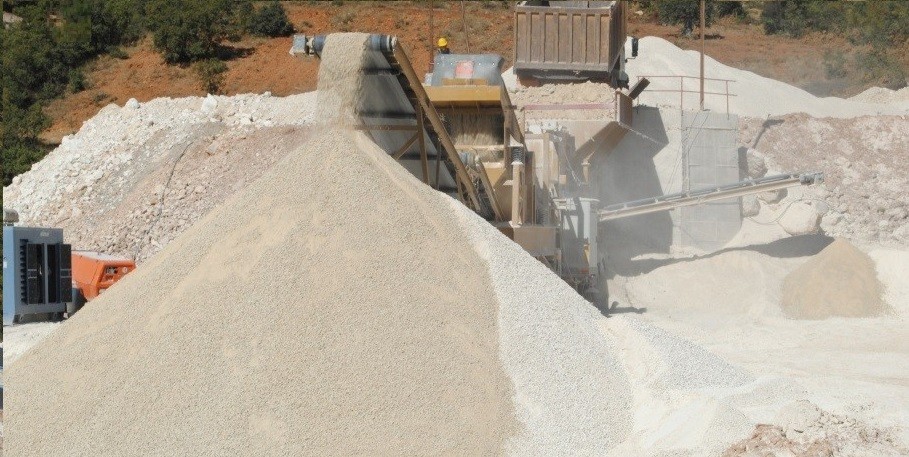Dolomite Crushing and Screening Plant: The Story of an Industrial Transformation
1. Introduction
Dolomite is a mineral composed of calcium and magnesium carbonate, found abundantly in nature and highly valuable for industry. It is widely used in construction, agriculture, glass and ceramics, and the chemical industry. However, it cannot be used in its raw state. To achieve maximum efficiency from its physical and chemical properties, dolomite must be processed in crushing and screening plants.
2. What is a Dolomite Crushing and Screening Plant?
A dolomite crushing and screening plant is an industrial facility established to reduce the size of raw dolomite and classify it accordingly. These plants operate with high production capacities and are often integrated with automation systems, turning them into modern production centers.
The main goal of the facility is to crush dolomite into desired sizes, separate unwanted dust or large pieces, and prepare the final product for market.
3. Production Process Steps
Raw Material Supply
Dolomite is generally extracted via open-pit mining methods. It is collected from quarries using blasting or excavation with heavy machinery.
Crushing Process
Large blocks of dolomite are first reduced by primary crushers into smaller pieces. This facilitates easier transport and further processing. Then, secondary and tertiary crushers are used to further reduce the material size.
Screening Process
Crushed dolomite is passed through vibrating screens, which separate the material based on size. The output is divided into different fractions suitable for various industries.
Storage and Shipment
Final products are transported to storage areas via conveyor belts. Depending on the demand, they are packaged in bulk, in bags, or stored in silos for shipment.
4. Technological Equipment and Machinery
-
Primary Crusher: Breaks down large dolomite blocks, typically with jaw crushers.
-
Secondary and Tertiary Crushers: Cone or impact crushers are used for finer crushing.
-
Vibrating Screens: Sort materials according to grain size.
-
Conveyor Belts: Transfer materials throughout the facility.
-
Dust Suppression Systems: Prevent environmental pollution by controlling dust.
5. Environmental Impacts and Precautions
These facilities can have significant environmental effects, but proper measures can reduce these to a minimum:
-
Dust Control: Water spraying and filtration systems
-
Noise Management: Sound insulation
-
Waste Management: Recycling and reuse systems
-
Environmental Permits: Compliance with local and national regulations
6. Economic and Industrial Significance
Dolomite crushing and screening plants contribute greatly to local economies:
-
Create employment opportunities
-
Provide raw materials to construction and industry
-
Support foreign exchange through exports
-
Encourage domestic production
7. Conclusion and Future Outlook
When equipped with modern technologies, dolomite processing plants become not only centers of raw material production but also environmentally responsible and sustainable industrial units. In the future, these plants will evolve further with smart automation systems, energy efficiency solutions, and eco-friendly innovations.
 English
English
 Le français
Le français
 Türkçe
Türkçe

